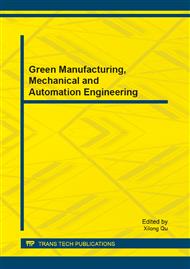p.701
p.706
p.710
p.715
p.722
p.727
p.732
p.737
p.744
Study on Traffic Prediction Algorithm Based on Multi-Scale Bi-Orthogonal Wavelet
Abstract:
The traffic prediction carried out in the communication enterprises is of great significance for the optimization of the network configuration and the improvement of the communication quality. To solve the inaccurate prediction problem under the actual situation, a traffic prediction method based on the bi-orthogonal multi-scale wavelet algorithm is developed. The process of the wavelet decomposition and reconstruction are studied, and the reconstruction results for the different scales wavelet are obtained. Take a set of the special actual samples as the object, the traffic prediction for the future dates is completed, and compared with the actual results. The results show that the relative error between the proposed traffic prediction model and the actual results is less than 10%. The bi-orthogonal multi-scale wavelet algorithm has some advantages as compared with other similar ones, which will provide the important technology means for the traffic prediction forecasting and assessing in the various types of communication enterprises.
Info:
Periodical:
Pages:
722-726
Citation:
Online since:
July 2013
Price:
Сopyright:
© 2013 Trans Tech Publications Ltd. All Rights Reserved
Share:
Citation:


